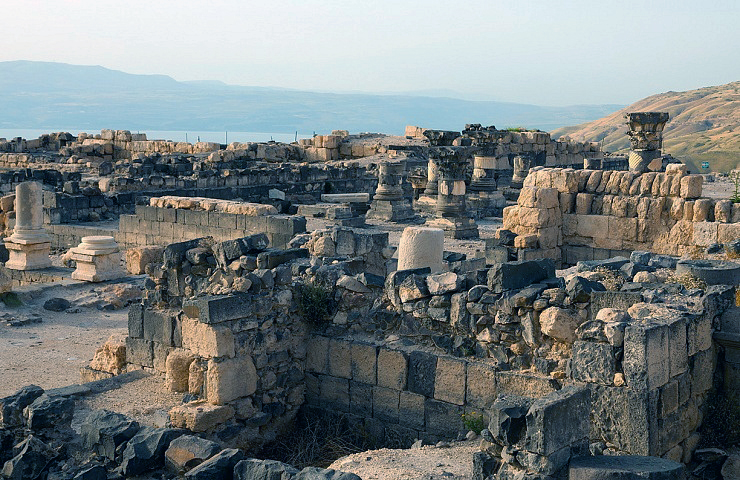
One of the cities of the Decapolis, Hippos (Hebrew, Sussita), sits on a hill nearly 350m above the eastern shorelines of the Sea of Galilee. Though not mentioned in the Bible, it is not unlikely that Jesus may have visited it. The city would have been visible to all who resided around the Sea of Galilee (including Capernaum which was situated in clear sight of the city on the other side of the lake), and easily resonated with Jesus's comment that like a "city set upon a hill" his disciples who should be "the salt of the earth . . . and the light of the world" cannot be hidden (Matt 5:14).
☰ Open Map

The hill on which Hippos was sited, viewed from the Sea of Galilee.
The origin of Hippos (Greek for "horse" in Greek; the Hebrew name means the same thing) is uncertain; most scholars believe it was founded for defensive purposes by one of the Seleucid monarchs to mark the boundary between them and the Ptolemies who ruled Egypt. It came under Roman rule when Pompey the Great reorganized the region in 63 BC, and was governed by Herod the Great until his death in 4 BC. Like most of the other Decapolis cities in NT times, it was Greek-Roman in culture and politics. Though all that remains of the city are its ruins, it once boasted a theatre that could sit 500, a Greek temple and substantial basilica. The city was badly damaged by a massive earthquake in 749 AD, when it was abandoned. The site has now been under archaeological excavation for many years.

The ruins of Hippos today

Online Resources :
☰ The City on the Hill Jesus Mentions: Susita/Hippo. Youtube 7.27mins.

©ALBERITH
290120lch